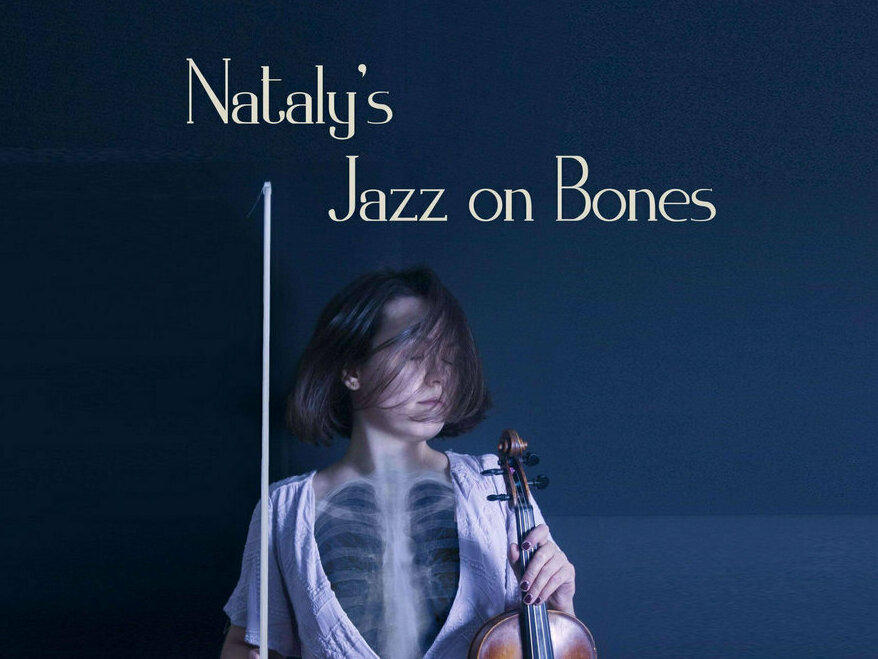Section Branding
Header Content
Violinist's album honors the underground effort to keep jazz alive after Stalin's ban
Primary Content
Updated February 13, 2023 at 1:16 PM ET
Before the days of digital photography, X-rays were developed onto a thick plastic-like material. Doctors would view them by clipping them to tables that projected light through the back of image, revealing ghostly images from inside the body.
But during the Cold War, X-rays were used to illuminate something else.
From 1946 to his death in 1953, Joseph Stalin banned jazz and many other forms of western music in the former Soviet Union. But bootleggers found a clever way around the ban. They sold copies of records on the black market that were etched into the surface of old X-rays.
Recordings of artists like Elvis Presley or Ella Fitzgerald were inscribed over pictures of rib cages, skulls, or thigh bones. The used X-rays were an excellent stand-in for an actual for vinyl records, and hospitals were overflowing with them at the time due to World War II. So there was no shortage of supply or demand.
There's a website dedicated to preserving these recordings. A violinist named Nataly Merezhuk has found another way to remember them.
Merezhuk is a Russian-born, classically-trained violinist. She's released an album of jazz violin music to honor the the X-ray recordings of jazz sold in back alleys in the Soviet Union. Her album is titled, "Jazz on Bones."
She spoke with Morning Edition's Leila Fadel about her album and the history of Jazz in Russia.
This interview has been edited for length and clarity.
Interview highlights
On the Soviet ban on Jazz
Initially I found out about this history by hearing different slogans that existed in the Soviet Union. Like there's one: 'First, he's listening to jazz, and next thing he's going to sell the motherland.'
It's fascinating that when my grandparents were my age, they would not have been allowed to listen to this music or they would have been sent, you know, to prison for that. And currently, I'm able to make a career out of it.
On how the X-Ray recordings were made
Recording studios had [store] fronts usually, and at the time it was popular to record voice memos on little postcard records that you could send to your family or something like that. So, during the daytime, that's kind of the fronts that they would have. During the night, usually they would take an x ray and they would cut a circle out of it. And then they had these machines that would cut the record into the X-ray.
On the links between Russian Jazz and Ukrainian folk music
I discovered that many people at the forefront of Soviet jazz were Ukrainians, and one person among them was Leonid Utyosov. He was actually a Jewish man from Odessa. And I think it's really important for Russian people to look clearly at the important people in our history and understand their backgrounds. Many different cultures and people have contributed, and it's important to respect their identities.
On how Merezhuk chose the music for Jazz on Bones
In the beginning of my exploration of this history, I chose songs that spoke to me as a Muscovite but were popular during that Soviet era. And also, there's a sprinkling of tunes by Django Reinhardt in there as well. But it was basically a blend of my love for Moscow, longing for it and exploring its history.
Copyright 2023 NPR. To see more, visit https://www.npr.org.

